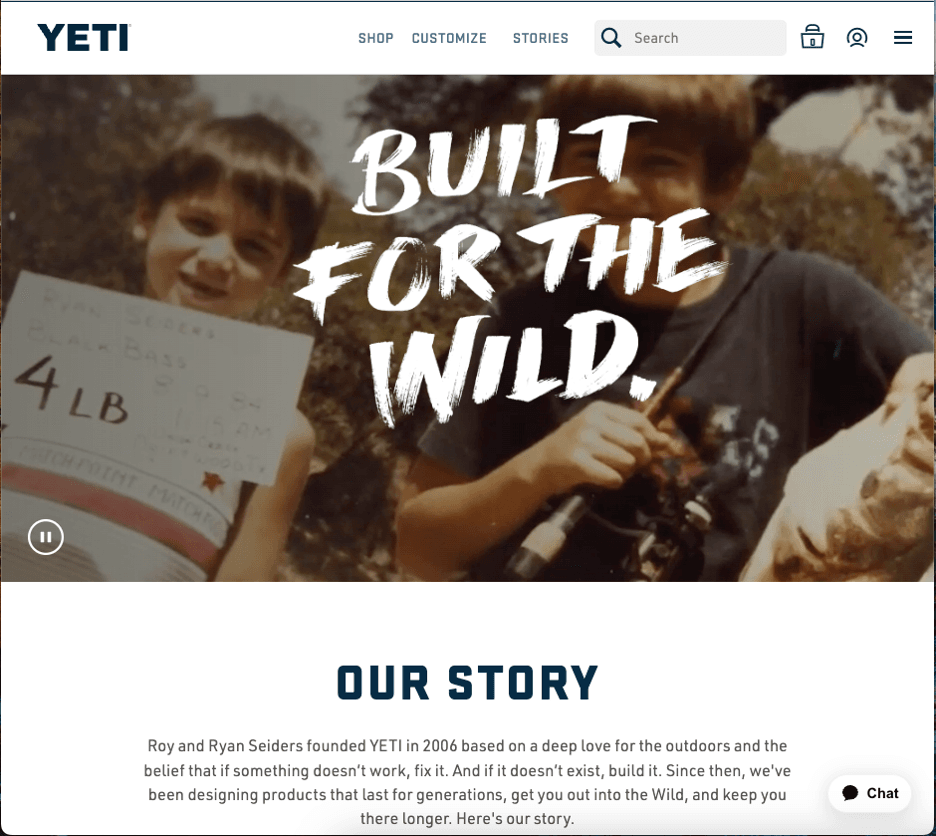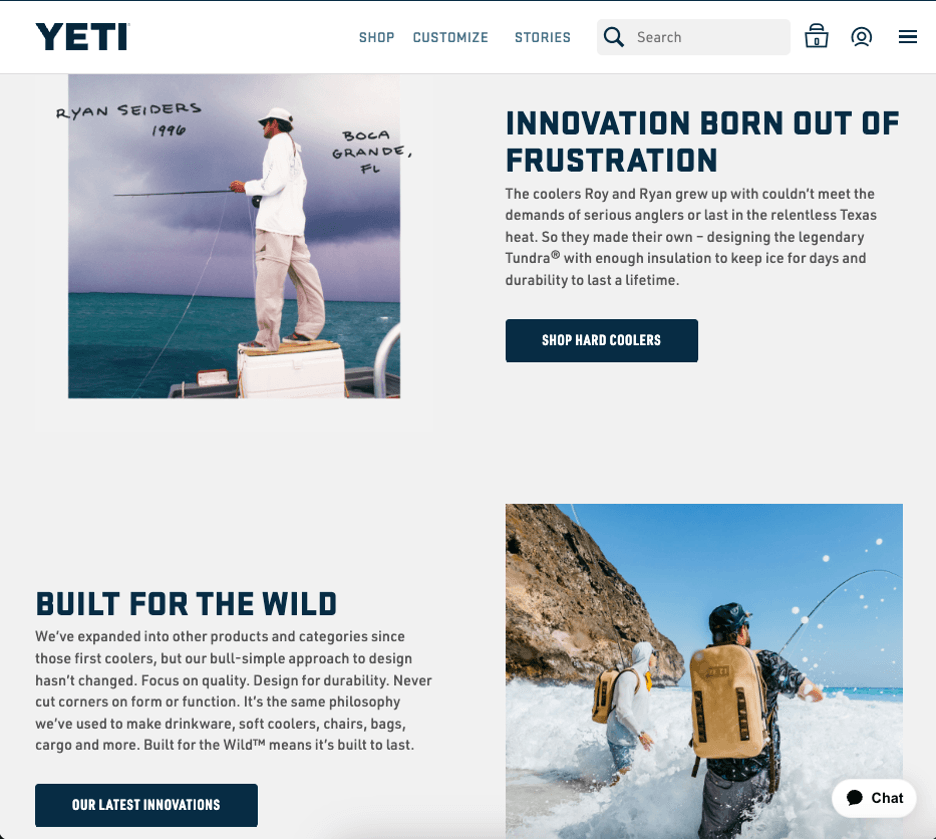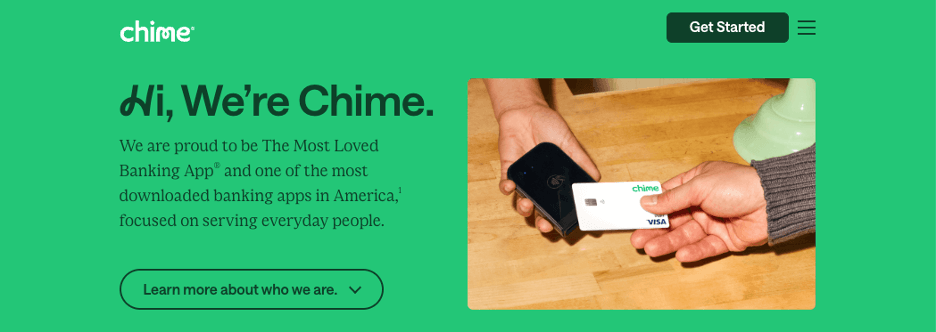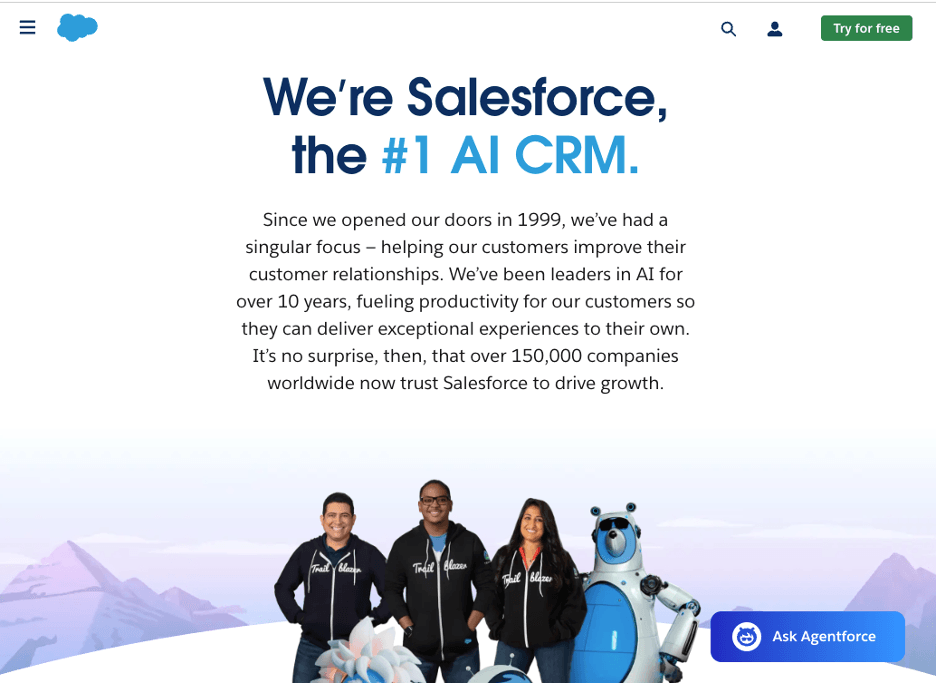Business.com aims to help business owners make informed decisions to support and grow their companies. We research and recommend products and services suitable for various business types, investing thousands of hours each year in this process.
As a business, we need to generate revenue to sustain our content. We have financial relationships with some companies we cover, earning commissions when readers purchase from our partners or share information about their needs. These relationships do not dictate our advice and recommendations. Our editorial team independently evaluates and recommends products and services based on their research and expertise. Learn more about our process and partners here.
About Us Page: Why Your Business Needs an ‘About’ Page
Your website's About page wields more marketing muscle than any other content piece.

Table of Contents
The About page is a fundamental element of a business’s website design, but many business owners don’t give it much thought or attention. It’s tempting to fill out your About page quickly with an uninspiring bio and buzzwords like “innovation” and “excellence.” However, if you don’t maximize your About Us page’s potential, you’re missing out on a valuable opportunity.
Your About Us page is a vital digital asset and one of your website’s most frequently visited pages. Anyone who wants to learn more about your company will head to the About page. We’ll explain why an About page is a crucial content element and explore best practices for creating an About page that displays your business in the best possible light.
Editor’s note: Looking for web design help? Fill out the below questionnaire to have our vendor partners contact you about your needs.
The importance of your About page
You may wonder why so many people visit the About page. Shouldn’t they look at the services or pricing sections first, or check out your content and resources? The About Us page’s popularity makes sense for several reasons.
1. The About page fosters familiarity and trust.
When you meet a new person at an event, what’s the first thing you do? You’ll likely check for similarities and ask about their background, hobbies and more. You’ll try to discern whether their story is similar to yours. When you feel a genuine connection, you may consider investing in the relationship.
Similarly, when a prospect visits your website for the first time, they’ll head to the About Us page to determine if they can trust you. They want to know your brand story and see if you have the experience, knowledge and expertise to solve their problems.
At this stage of the customer journey, your prospects want to understand what you’re doing and why you’re doing it. If your About page includes elements of your mission statement or company vision, readers can determine if your business resonates with them and aligns with their values and needs.
“When done right, it’s the page that builds trust, frames your value and connects with your audience on a human level,” explained Darryl Stevens, CEO and founder of Digitech Web Design. “People don’t just want to know what you do; they want to know who’s behind it, why it exists and what you stand for. That context is often what tips the scale in your favor when a visitor is deciding whether to work with you or keep browsing.”
In addition, Shaun David, senior market analyst at CleaRank said, “Your About Us page isn’t a dusty corporate brochure, it’s a trust magnet so ensure you build it effectively. Here’s my breakdown on why it matters, backed by CleaRank’s analysis of 5M+ high-converting sites: 68 percent of users check About pages before trusting a brand and Google uses it to confirm E-E-A-T (Experience, Expertise, Authority, Trustworthiness), which impacts rankings.”
2. The About Us page helps visitors understand their options.
The About page is also the perfect place for visitors to narrow their options quickly.
For example, say Company A’s About page discusses creating the highest-quality product in the industry. However, Company B’s About page mentions its desire to make the product affordable and accessible to all. If the visitor seeks a higher-cost, higher-quality product, they’ll want to know more about Company A’s products. If cost is a significant issue, they’ll be more inclined to buy from Company B.
3. The About page humanizes your business.
The About Us page helps to humanize your business by telling visitors about you and your team. Put a face to a name and title, and let your photos and bios reassure visitors that they’re dealing with real humans who understand their needs.
How to write an About Us page
When you craft your About page, make sure to do the following:
- Tell website visitors what you do. Start your About page by clearly detailing the company’s mission and purpose, without using any jargon. For example, let’s say you’re a healthcare software provider. An About page that starts with “We create software that makes it easier for healthcare providers to manage their practices,” is much more compelling and descriptive than “Our solutions protect sensitive data and offer multiple ways to gain insights about the people that you serve.”
- Give prospective customers a reason to buy from you. After sharing what you do, you should explain how your company, products and services are different and better than competitors’. Clearly convey how your offerings can benefit prospective customers. Include a sentence or two explaining how customers can rely on your company to back up its products and services with a great customer experience, both before and after the sale.
- Add humanizing elements. For example, write a brief paragraph that explains your company’s history, founders and values. Consider including photos of your company’s founders, key employees and your product creation process. If your company has a storied local history, adding photos of the original building is a nice touch. Be sure to use a friendly tone to further humanize your brand.
- End your About Us page with a call to action (CTA). Don’t leave your prospect hanging. If you’ve effectively introduced your company on your About Us page, a CTA can seal the deal. A CTA invites your website visitors to take another step. You can ask visitors to subscribe to your blog, download a whitepaper or enter their email addresses as part of your lead generation strategy. Here are some examples of strong About page CTAs:
- “Check out our [product name]”
- “Start your free trial”
- “Browse our catalog”
- “Schedule an appointment”
- “Shop now”
Best practices for creating About Us page content
It may take time to find your company’s unique identity and voice and translate them into well-crafted copy. However, consider the following guidelines as you begin creating a compelling About page.
Focus on the customer.
Your About Us page doesn’t have to be all about you. Website visitors are there because they’re facing a problem or challenge and need your help. If you can prove you understand their problems, they’ll feel more inclined to trust you.
Don’t glorify your company by including only big philosophical missions and visions on your About page. Instead, share your company’s mission while making it clear that you’re here to solve your customers’ problems.
Tell your story.
Storytelling is a compelling way to capture your audience’s attention. An engaging story about your business’s humble beginnings can establish immediate trust in your customer’s minds.
Share how your products or services were developed to improve lives. Discuss problems or challenges you faced that led you to start this business. If your business is family-owned, let visitors know. Genuine stories humanize your brand, which provides context and meaning for your business.
“From analyzing hundreds of websites, I’ve found that visitors spend 23 percent more time on sites with compelling About Us pages that tell authentic stories about real customer impact,” said Joe Davies, CEO of FATJOE. “I recommend keeping it focused on how you solve customer problems rather than just listing awards or credentials — for example, share a brief story about how your team went above and beyond to help a specific customer overcome a challenge.”
Include contact information.
Many businesses feature key employees, including photos and short bios, on their About pages. Introducing your team will make your business look more authentic and human.
Include team members’ contact information so visitors can reach out to them. For example, if someone wants to access your sales team, they’ll know precisely whom to contact. Linking this information can also help you build an email marketing list of interested prospects.
Make your About Us page memorable.
Whatever you do, don’t make your About Us page boring. Strive to create a lasting impression in your prospects’ minds so they don’t forget you the moment they close the tab.
People are far more likely to do business with people they like, and your About Us page can make all the difference in helping visitors form the right first impression. Additionally, make your About page copy consistent with your brand. And while it should be professional, a bit of humor is always welcome.
Toot your own horn.
Although you don’t want to sound obnoxious, the About Us page is the place to tell prospects about your accomplishments. Showcase anything that builds credibility, including the following information:
- The number of years you’ve been in business (if it’s a long time)
- Your experience in the industry and related fields
- Any patents, copyrights and other proprietary intellectual property you own
- The owner’s and executive team’s relevant education, training and certifications
- Awards your company has received
- Honors anyone on your executive team has received
- Company or product certifications, like ISO or Microsoft Partner, or evidence that you’re OSHA-compliant
- Certifications or practices related to sustainability, such as LEED, B Corp or Energy Star
- Statistics and survey data that demonstrate your success, such as customer satisfaction survey results, reviews (number of stars and number of reviews), the size of your customer base, the percentage of repeat customers and the percentage of business from referrals
Share your values.
Tell prospects what’s important to you. When visitors see that you share their values, they’ll feel more comfortable buying from you.
Consider sharing these company values:
- Integrity
- Quality artistry
- Excellent customer service
- Sustainability
- Curiosity and innovation
- Continuous improvement
- Diversity and inclusion
- Impact
- Community involvement
- Transparency in business
- Collaboration
Choose and highlight the top three or four values that are the most important to your company. If your target audience is particularly focused on these values, discuss how you put them into action.
Using the About Us page to show your values in action can also be incredibly effective. David shared, “I recently analyzed a firm that added ‘Mission Mondays’ (team volunteering videos) to their About page and the result was an impressive 17 percent spike in signups within three months. A good About Us page will convert your visitors into believers.”
Examples of effective website About Us pages
You can learn from companies that do an outstanding job with their About pages. Use the following brands for inspiration.
Yeti
Outdoor products manufacturer Yeti excels in visual storytelling. Its About page shows multiple action shots and videos of its founders and others engaging in outdoor activities. Its tagline, “Built for the Wild,” immediately identifies its target audience: people who enjoy fishing, hunting, diving and the great outdoors. The copy discusses how the company’s founders were frustrated with existing coolers and set out to build better-performing products.
The About page continues by sharing the company’s commitment to quality and durability, which flows into all its products. It provides social proof by saying the company’s “products have been embraced by communities and outdoor pros across the world.” The page finishes with a statement of the company’s values, which include protecting wild environments.


Chime
If you’ve never heard of Chime, you would be forgiven for thinking it had something to do with doorbells. However, the banking app’s About Us page immediately tells you what the company does, how it does it and why it’s better than the competition. The About page states the company’s mission, shows its leadership team, discusses its culture and highlights its values. The company also creates some goodwill by highlighting its investment in communities through its scholarship foundation.

Salesforce
When you think about the giant sales management software company Salesforce, you might expect its About page to be stiff and impersonal. However, the company takes an entirely different approach. While the rest of the Salesforce website is relatively plain, straightforward and full of text, the About page features cute cartoon characters and has a friendly, nontechnical tone.
The copy emphasizes its AI capabilities and how they can help customers. The About page positions the company as one that sells tools to help its business customers connect with their customers to drive success and, ultimately, create positive change. The word “connections” is used repeatedly in references to Salesforce’s innovation in providing cloud computing solutions; it’s even included in the featured testimonial. The About Us page’s message conveys that technology is nothing to be afraid of; instead, it can help businesses create connections and trust with their customers.

Get the most from your About page
Your About Us page isn’t just a standard website design requirement. A compelling, thoughtful About page can help generate leads, boost website traffic and present your organization in the best possible light, especially for small businesses without an established brand value.









